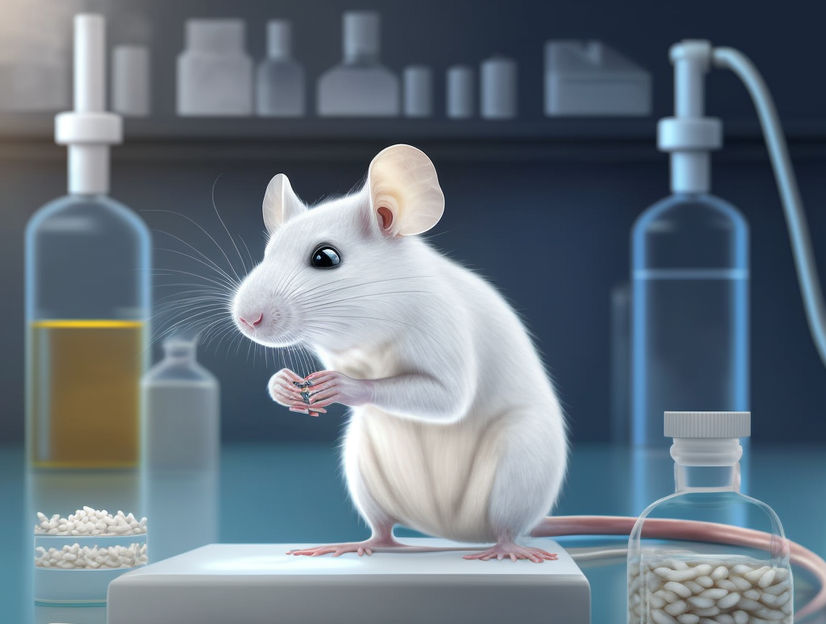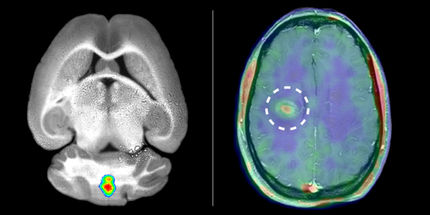Caterpillars as a replacement for mammalian models in preclinical research
Research team developed an innovative and unique imaging platform
Inflammation research is becoming more ethical and economical: caterpillars help to understand gut inflammation and enable the faster and more efficient development of new therapies.

Symbolic image
Computer-generated image
Insects, like caterpillars, suffer from the same or related diseases as humans because 75 % of genes associated with human illness are also present in insects. Consequently, caterpillars like the tobacco hornworm can be used as a model organism, improving the understanding of diseases and helping to test and develop new therapies or diagnostic tools. A team around Anton G. Windfelder, a zoologist at the University of Giessen and employee of Fraunhofer IME, Germany, are reporting the alternative use of caterpillars to study chronic inflammatory bowel diseases in Nature Communications.
"Inflammatory diseases of the alimentary tract affect millions of people worldwide, and the incidence of chronic inflammatory bowel diseases is rising globally," says Dr. Windfelder. "The innate gut immunity and the organization of the intestinal epithelium of tobacco hornworm larvae are comparable to those of mammals. However, in contrast to other insects such as Drosophila, the fruit fly, caterpillars of tobacco hornworm are large enough for medical imaging." Together with national and international cooperation partners from Düsseldorf, Germany, and New York, USA, Anton G. Windfelder and team developed an innovative and unique imaging platform. "We use medical imaging modalities like computed tomography (CT), magnetic resonance imaging (MRI), and positron emission tomography (PET) to characterize a gut inflammation in tobacco hornworm." says Gabriele Krombach, Head of the Clinic for Diagnostic and Interventional Radiology at UKGM Giessen, who is a co-author of the study.
"Intestinal inflammation in larvae of tobacco hornworm is diagnosed using contrast media and tracers such as FDG (18F-desoxyglucose)," says Dr. Windfelder. "This is in analogy to the diagnosis of gut inflammation in humans." Anti-inflammatory medications such as cortisone, used in acute flares of human chronic inflammatory bowel disease, also show a significant reduction in gut inflammation in the larvae of the tobacco hornworm. The advantage of the imaging platform is that multiple animals can be studied simultaneously. Up to 100 animals can be examined in a few seconds using CT. In contrast to traditional methods, the animals stay alive and survive. "The animals tolerate the anesthesia and imaging very well and can continue to live after the experiments."
With the publication mentioned, Windfelder and team want to draw attention to the successful alternative use of insects in early preclinical research. "Of course, insects like cannot fully replace mice and rats.” adds Andreas Vilcinskas, head of the Fraunhofer IME in Giessen and head of the Institute for Insect Biotechnology at the JLU Giessen, who was also involved in the study. "Evidence from cell culture is often not reproducible in in-vivo systems like mice," Vilcinskas says. "Here, insects like Manduca can help identify promising new targets or therapies worth further investigating in traditional mouse models." This would speed up research and make it more affordable. In this way, researchers could significantly reduce the use of classic laboratory animals and thus contribute substantially to animal welfare.
Original publication
Anton G. Windfelder, Frank H. H. Müller, Benedict Mc Larney, Michael Hentschel, Anna Christina Böhringer, Christoph-Rüdiger von Bredow, Florian H. Leinberger, Marian Kampschulte, Lorenz Maier, Yvette M. von Bredow, Vera Flocke, Hans Merzendorfer, Gabriele A. Krombach, Andreas Vilcinskas, Jan Grimm, Tina E. Trenczek & Ulrich Flögel: High-throughput Screening of Caterpillars as a Platform to Study Host-microbe Interactions and Enteric Immunity. Nature Communications 2022
Most read news
Original publication
Anton G. Windfelder, Frank H. H. Müller, Benedict Mc Larney, Michael Hentschel, Anna Christina Böhringer, Christoph-Rüdiger von Bredow, Florian H. Leinberger, Marian Kampschulte, Lorenz Maier, Yvette M. von Bredow, Vera Flocke, Hans Merzendorfer, Gabriele A. Krombach, Andreas Vilcinskas, Jan Grimm, Tina E. Trenczek & Ulrich Flögel: High-throughput Screening of Caterpillars as a Platform to Study Host-microbe Interactions and Enteric Immunity. Nature Communications 2022
Topics
Organizations
Other news from the department science

Get the life science industry in your inbox
By submitting this form you agree that LUMITOS AG will send you the newsletter(s) selected above by email. Your data will not be passed on to third parties. Your data will be stored and processed in accordance with our data protection regulations. LUMITOS may contact you by email for the purpose of advertising or market and opinion surveys. You can revoke your consent at any time without giving reasons to LUMITOS AG, Ernst-Augustin-Str. 2, 12489 Berlin, Germany or by e-mail at revoke@lumitos.com with effect for the future. In addition, each email contains a link to unsubscribe from the corresponding newsletter.
Most read news
More news from our other portals
Last viewed contents

Sartorius expects profitable growth in 2024 - Double-digit annual sales revenue growth projected through to 2028
Cell Receptor Recycling Mechanism Discovery opens up New Class of Therapeutic Targets
Novartis Phase III study shows ACZ885 helped substantially reduce steroid use in 45% of patients with serious form of childhood arthritis - Chronic steroid use to treat the symptoms of systemic juvenile idiopathic arthritis (SJIA) can contribute to slowed growth and delayed puberty
Medivir Announces Positive 48-week Interim Data from TMC435 Hepatitis C Phase 2b ASPIRE Study in Treatment-Experienced Genotype-1 Patients






















































